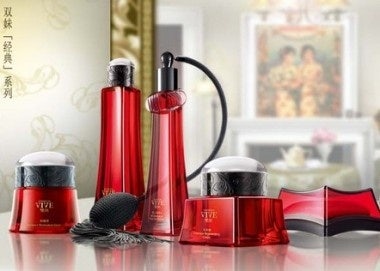Shanghai Jahwa's New High-End Line Marks Shift From Manufacturer To Brand Operator#

This week, the long-awaited launch of Shanghai VIVE (双妹), the new high-end line by the Chinese cosmetics manufacturer Shanghai Jahwa, took place at the newly restored Shanghai Peace Hotel. Designed to emulate the extravagance and elegance of 1930s Shanghai, the Shanghai VIVE line marks the latest attempt by a domestic Chinese company to make the shift from low-cost, low-profit manufacturer to high-end brand operator.
As Wang Zhuo, vice-president of Shanghai Jahwa, recently told China Daily, Shanghai VIVE is hoping to tap into the lucrative middle-class, 30+ female market through a combination of "branding power" and quality. Ge Wenyao, chairman of the company, added that VIVE would open at least five outlets in Shanghai by the end of the year, with more than 20 more in the works over the next two to three years.
However, like other "made in China" brands trying to make the leap from run-of-the-mill to luxury, Shanghai VIVE is likely to encounter consumer resistance. Although Shanghai Jahwa's lower-priced imprints, the mid-priced Herborist (which recorded 60% growth last year) and budget-friendly Liushen, have succeeded by largely avoiding direct competition with imported brands, Shanghai VIVE will have to convince consumers that its retro style and cool packaging is backed up with an import-quality product.
As China Economic Net pointed out this week, Shanghai VIVE's initial product line includes "cosmetics, jewelry and accessories, with prices ranging from 300 yuan (US$44) to more than 1500 yuan ($221), a significant price hike in comparison to [Herborist or Liushen]." According to China Daily, a 50-milliliter bottle of VIVE perfume will cost around 1,000 yuan ($147) -- pretty pricey when you consider most imported perfumes cost anywhere from 500-900 yuan.
This places Shanghai VIVE in the same price range as Chanel, Dior and other dominant luxury brands in the perfume segment. A gutsy move, especially considering that it's far from certain that Chinese consumers will be willing to pay a premium for a local brand, no matter how well it's packaged and marketed. An article today in the Chinese portal Nanxun predicts a cool reaction from brand-worshipping Chinese consumers towards Shanghai VIVE. Although the writer appears to have Shanghai VIVE confused with the low-end Hong Kong brand Two Girls, since the two brands are only one character apart in Chinese (双妹 vs. 双妹嚜) -- a sticking point that threatens to discredit the entire article -- one criticism seems pertinent for any brand looking to capitalize on Shanghai's Jazz Age "Paris of the East" image. From the article (translation by Jing Daily team):
[Shanghai VIVE] won't be able to conquer most markets in China. Furthermore, Non-Shanghainese don't have any real connection to Shanghai culture. The cultures of north China and Shanghai are like oil and water -- quite simply, like the local TV shows only watched and understood by locals, Shanghai culture is inscrutable for outsiders.

Others like Gu Jun, vice-director of the China Cosmetics Marketing Research Center, are skeptical of Shanghai VIVE's chances in the cut-throat China luxury market. As Gu said recently, it's likely going to take quite a while for the brand to build a following, since "its advantage [over imported brands], so far as we hear, is its brand culture, not anything special in cosmetology. What women in their mid-30s care most about is the beauty features of a product instead of its brand story."
However, Shanghai Jahwa representatives have said that they expect the new brand to be profitable within seven years. Considering the profits Shanghai Jahwa is currently seeing with its other brands, it's likely that they'll bankroll the new venture as long as it takes to capture some coveted market share from foreign rivals.
As always, we'll have to take a "wait-and-see" approach with Shanghai VIVE. Will its target consumer be captivated by its "Paris of the East" flavor and the opulent surroundings of the company's Peace Hotel boutique? Or will the "Old Shanghai" vibe fail to resonate outside of "New" Shanghai? Could Chinese consumers be willing to pay a premium over foreign brands for Shanghai VIVE's localized products? Or will (foreign) brand worship be VIVE's undoing?